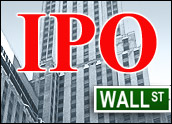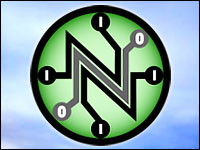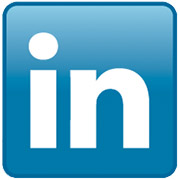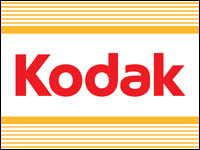
LinkedIn’s doubled stock price after its IPO on Thursday has many wondering if this could be the start of another tech bubble. LinkedIn initially offered 7.84 million shares at US$45 each. Within minutes, the shares doubled in price and eventually peaked at $122.70 each. The price lingered around $100 on Friday.
LinkedIn reportedly has the highest price-revenue ratio of any stock anywhere. LinkedIn’s market value is being reported as around $9.5 billion, which is roughly 39 times last year’s sales. On the secondary market, LinkedIn has been valued as high as $80 billion.
Analysts and even the bankers who were underwriting the IPO were surprised by the explosion of interest in LinkedIn. This harkens back to the dot-com boom of the 1990s, when mammoth sums were pumped into new technology companies that demonstrated no path to profits. There’s now a debate over whether the LinkedIn IPO signals the beginning of a similar bubble.
LinkedIn rode a high wave as the first social network to go IPO. The future fortunes of IPOs from Facebook, Groupon, Zynga and Twitter are clearly lifted by LinkedIn ‘s splash.
LinkedIn declined the E-Commerce Times’ request for comments on the IPO.
LinkedIn Blows a New Tech Bubble
Investors dove for a piece of the first social networking IPO. Clearly there was built-in demand. More hoopla will likely come when the general-audience networks Facebook and Twitter enter the market.
“What we’re seeing in the high stock price of LinkedIn is the mechanism of supply and demand at work,” Rob Enderle, principal analyst at the Enderle Group, told the E-Commerce Times. “What’s driving the price is not the financial performance of LinkedIn. It’s that people want to get into the social networking market. It’s creating a fairly significant bubble.”
The timing for new social-network IPOs could be tricky. The demand for social network stock may ebb as the selection grows.
“The bubble will eventually correct,” said Enderle. “If Facebook comes out this year, they’ll be all right. If Facebook comes out after the correction, its stock won’t go nearly as high as it should. LinkedIn is overpriced from the standpoint of financial performance, but not from the standpoint of supply and demand. This will change when the buyers get nervous or when more social networking players come into the market and create a supply-and-demand correction.”
A high stock valuation creates big expectations, and LinkedIn may not live up to them.
“Google made it by taking over online advertising, and LinkedIn can’t get there,” noted Enderle. “It’s much less likely we’ll have a [high cashflow] Google event from LinkedIn. Facebook is a little more interesting because they’ve partnered with Microsoft, which might help them get bigger than it could on its own.”
Crossroads for Social Networks: To IPO or Not to IPO?
Private social networks are likely analyzing the most strategically sound point to launch their IPOs. Networks can try to jump into the fray now and cash in on the buzz, or wait and see how it plays out.
“People are going to invest in social networks because they don’t want to get left out,” Steven Savage, technology project manager and Geek 2.0 blogger, told the E-Commerce Times. “LinkedIn did pretty good, let’s face it — wouldn’t you want a piece of that? Social networks now have to pace their IPOs. Do they want to accelerate and jump on the bandwagon, or wait to avoid a rush?”
Investors are hungry for a break to lift them out of the economic slump. There could be a bubble forming, but it’s not clear how significant it might be.
“I have no doubt some social media companies are overvalued and this could mean a bubble,” said Savage. “It’s not a ‘tech bubble’ however — it’s a more specialized one, and I’m sure even the overvalued companies have some value. This maybe-bubble isn’t going to discourage investors for the most part. People are hungry for a quick hit in this recession.”
A possible effect of the LinkedIn IPO could be a major change to its identity as a company. The IPO lifts it into a new category with larger expectations.
“I love the site, but I think there was some doubt about it as a business entity,” said Savage. “LinkedIn has stepped into a whole other world — a much bigger one. It’s going to have to grow and evolve, maintain proper profits, expand its audiences and services. I think they’re up for it, but the LinkedIn to come is going to be a bigger, more different place. My biggest worry is the LinkedIn of the future may lose what made it work — its practical, networked focus. But I think they’ll do fine — they made it this far.”
The buzz surrounding the first modern social network going IPO helped drive the price — not the company’s financial performance.
“This isn’t LinkedIn’s fault, it’s just that the market went crazy for the stock,” said Savage. “If it had been Twitter or Facebook or someone else, there would be even more enthusiasm. Right now, though, the profits don’t justify the price — this is a bet on the future of the company, and maybe some wishful thinking and hope.”
It would take a ton of growth for these stock prices to become justified, Savage noted, but it is not completely out of the question. LinkedIn could grow into its new shoes.
“They’re very well established, have fingers in many pies, and certainly have all sorts of areas to expand,” he observed. “They have cash to work with and now a high stock value. My gut instinct, however, is that LinkedIn may mature quickly, with its profits rising — but also its stock value lowering over time to find an appropriate medium. I just don’t see the stock staying at this price-revenue ratio for more than a year.”






















































Social Media
See all Social Media